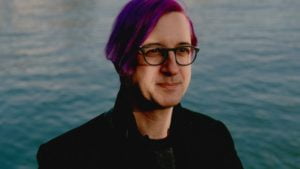Do you “grok” jargon? Does your “filk” contain references to “BEM“s or “BDO“s? And do the goings-on in Washington make you want to go into “cryostasis” in your “hobbit-hole“?
Every discipline has its own jargon – specialized words that are used by the practitioners or fans of any profession or activity.

Lexicographer Jesse Sheidlower has published the Historical Dictionary of Science Fiction, an online database, to document the core vocabulary of science fiction. Begun when he was an editor at the Oxford English Dictionary, the HDSF is an on-going effort to show the history of usage of words invented by writers in this field.
If you are a reader of speculative fiction, you’ve probably come across scores of these kinds of words in the genre. Science fiction writers, because they write about worlds of their imagination or far-future technologies, often coin argot to use with their literary inventions.
And sometimes other writers pick up on the new word and use it themselves.
The HDSF is organized in several ways. The words themselves are listed alphabetically, so you can go to the “D”s or type in “droid” in a search box if you’d like to go straight to its definition. There you will also see when “droid” was first — and subsequently — used. That’s the “historical” part of the site’s name. Each word entry is cross-referenced to the relevant author’s page and sometimes to an analogous entry in the International Science Fiction Database.
But you can also view which authors contributed the most to our science fiction lexicon – as of today, Edward E. Smith, aka E.E. “Doc” Smith, is recorded as having added 45 words or phrases to science fiction jargon that were deemed worthy of inclusion.

And if your interest is in words pertaining to weaponry or in demonys — words associated with specific places — the HDSF has a section organized by subject, too.
Do you have a favorite author and wonder if they’re included in the lexicon? You can type a name into a search box and receive a list of all the HDSF words used by that author, in which publication, and when it was published. For example, “airlock” was originally coined in 1840 with reference to submarines, and then by John Campbell in 1930 in his Amazing Stories Quarterly story Black Star Passes. More recently, Robert J. Sawyer used it in 2005 in his book Mindscan.
Which was the most prolific decade for the invention of new science fiction-related terms? HDSF provides a graph of earliest citations in aggregate; the 1930s were when the genre took off and jargon proliferated. Besides use in fiction, the graph also shows when new words were used by literary critics.

In an email exchange, I suggested to Sheidlower that “conlang,” meaning “a constructed or artificial language,” should be added to the dictionary. And he agreed. The new entry shows that conlang’s first documented use was in 1991 and the Washington Post published an article containing it in May of 2019.
Sheidlower, when asked, declined to name his favorite HDSF entry (how can you pick just one of your children?), but he did share that researching the three entries for the various flavors of speculative fiction (“science fiction”, “imaginative fiction”, and “fiction labeled so to avoid a stigma felt to be associated with the term ‘science fiction’”) were slow and rough.
Edited by Maria Korolov
Melody Friedenthal is a librarian at a public library and a copyeditor for MetaStellar. In her spare time she's the chief bottle-washer for To Tell A Tale Writers' Group and is an affiliate member of the SFWA. Her work has been published in Tales From Shelf 804: an anthology, N3F, Bardsy, MetaStellar, and New Myths. She believes writing is a gateway drug, alpacas are cute, and dark chocolate is heaven.

